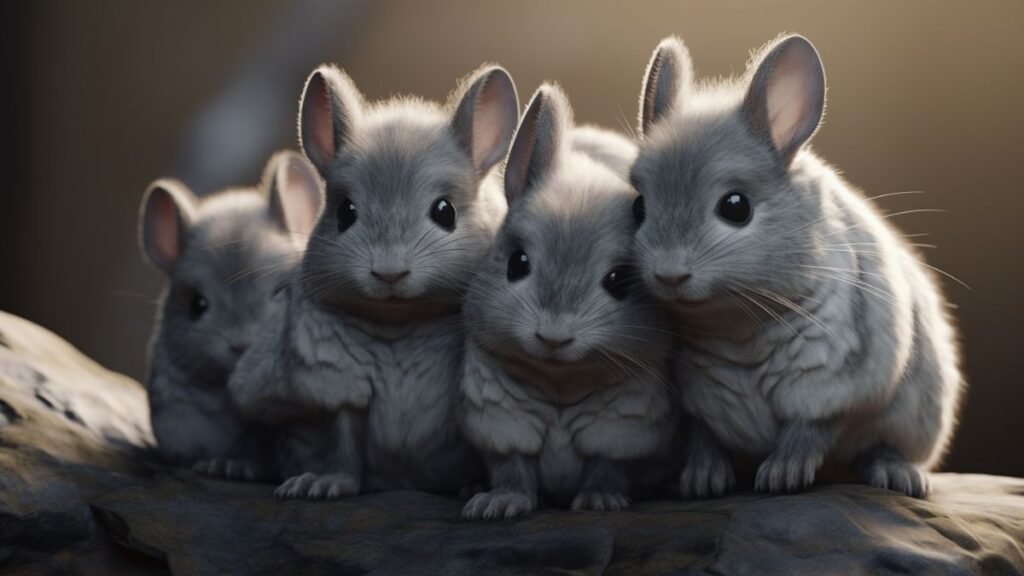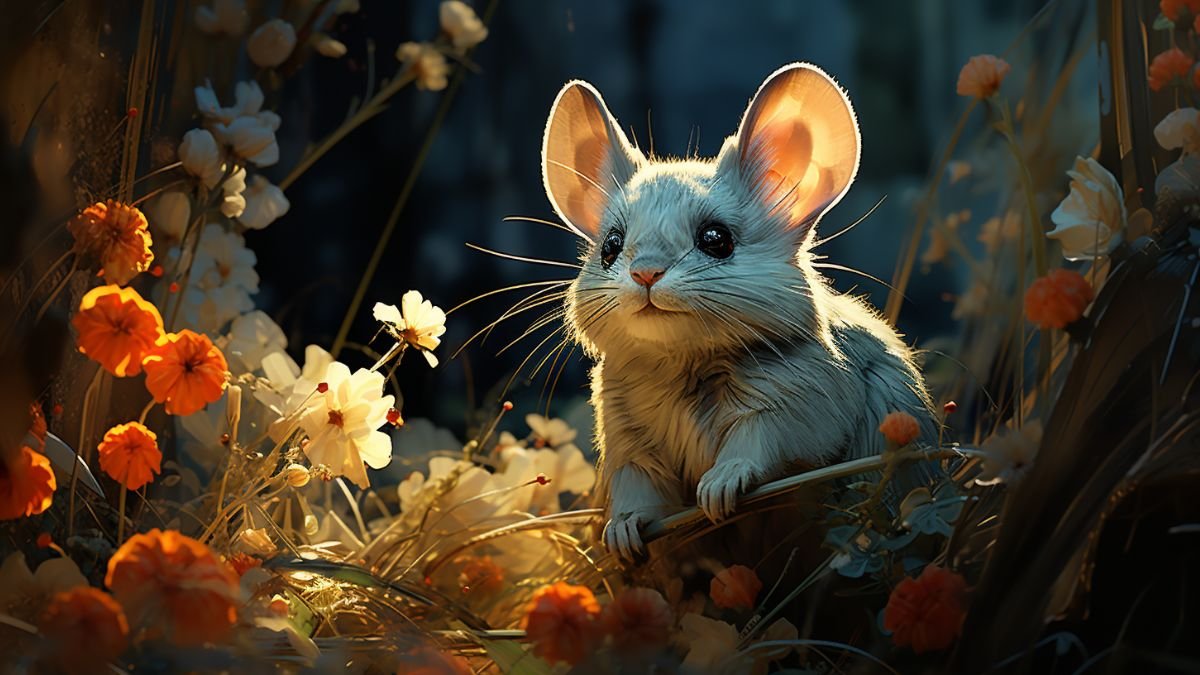
How many chinchillas are left in the world? This question sparks curiosity and concern for these adorable little creatures. Chinchillas, known for their luxurious fur and playful nature, have seen a decline in their population over the years. In this article, we’ll explore the current status of chinchillas and the efforts being made to protect them.
When it comes to the number of chinchillas remaining in the world, the situation is quite alarming. Due to habitat loss, hunting, and illegal pet trade, their population has drastically decreased. Today, it is estimated that only a few thousand chinchillas are left in the wild. These tiny rodents are native to the Andes Mountains in South America and are primarily found in Chile and Peru.
The decline in chinchilla numbers has led to conservation initiatives to preserve their species. Several organizations are working tirelessly to protect chinchillas and their natural habitats. Efforts include establishing protected areas, enforcing stricter regulations on hunting and trading, and promoting public awareness about the importance of conserving these unique animals.
One of the main challenges in conserving chinchillas is their slow reproductive rate. Chinchillas have a relatively long gestation period and give birth to only one or two kits at a time. This low reproductive capacity makes it difficult for their populations to bounce back quickly. Additionally, their specialized dietary needs and sensitivity to environmental changes further complicate conservation efforts.
To ensure the survival of chinchillas, governments, conservation groups, and individuals must work together. By supporting conservation projects, advocating for sustainable practices, and raising awareness about the plight of chinchillas, we can contribute to their preservation.
the number of chinchillas remaining in the world is alarmingly low, with only a few thousand estimated to be left in their natural habitat. Conservation efforts are underway to protect these charismatic creatures from further decline. By taking action and spreading awareness, we can help safeguard the future of chinchillas and ensure that generations can marvel at their beauty and playfulness.
Overview of the Global Chinchilla Population
Sure! Here’s a 300-word article on the topic “Overview of Global Chinchilla Population”:
Did you know that chinchillas are not just adorable and fluffy, but they also have an exciting population spread across the globe? Let’s look at the overview of the global chinchilla population.
Chinchillas are native to the Andes Mountains in South America. Their natural habitat consists of rocky terrains and high-altitude regions. These furry creatures were initially found in Chile, Peru, Bolivia, and Argentina. However, due to their popularity as pets and luxurious fur, chinchillas have been introduced to various parts of the world.
Today, chinchillas can be found in different countries, including the United States, Canada, Europe, and Asia. These regions provide suitable environments for them to thrive. In captivity, chinchillas are bred for their fur, companionship, and even as show animals.
The global chinchilla population is divided into two main categories: wild and domesticated. In the wild, chinchillas are considered vulnerable due to habitat destruction, hunting, and illegal trade. Efforts have been made to protect their natural habitats and regulate their trade to prevent further decline in their numbers.
On the other hand, domesticated chinchillas have seen a significant increase in population, especially in regions where they are popular as pets. With proper care and attention, chinchillas can live up to 15 years in captivity. They require spacious cages, a balanced diet, and regular exercise to maintain their health and well-being.
Chinchillas have become beloved pets for many people around the world. Their playful nature, soft fur, and unique personalities make them fascinating companions. Additionally, their fur is highly valued in the fashion industry, leading to controlled breeding programs for fur production.
the global chinchilla population consists of both wild and domesticated chinchillas. While their numbers in the wild are vulnerable, their population has grown considerably in captivity due to their popularity as pets and the demand for luxurious fur. By understanding their needs and working towards conservation efforts, we can ensure the survival and well-being of these delightful creatures.
Remember: Chinchillas are not just cute; they are integral to our natural and cultural heritage.
Factors Affecting Chinchilla Population Decline

Are you curious to know what factors contribute to the decline in the chinchilla population? Let’s dive into the details and explore the reasons behind this trend.
One significant factor impacting the decline of the chinchilla population is habitat loss. Chinchillas are losing their homes as human activities encroach upon natural habitats. Deforestation, urbanization, and agricultural expansion destroy their native environments. Without suitable habitats to thrive in, chinchillas face difficulty finding food, shelter, and safe breeding grounds.
Another key factor affecting chinchilla populations is hunting and trapping. These adorable creatures have long been sought after for their soft fur. Despite protective measures, illegal hunting and trapping still persist, particularly in regions with weak enforcement of wildlife protection laws. This unregulated exploitation severely diminishes chinchilla populations, pushing them closer to extinction.
Climate change also plays a detrimental role in the decline of chinchilla populations. Rising temperatures, altered precipitation patterns, and changing ecological dynamics affect the availability of food and water sources. Chinchillas, specialized to live in specific climatic conditions, struggle to adapt to these rapid changes. Their reproductive rates decrease, and overall survival becomes more challenging as their natural habitats become inhospitable.
Furthermore, disease outbreaks pose a significant threat to chinchilla populations. As with any living organism, chinchillas are susceptible to various diseases. These diseases can spread quickly and decimate entire colonies when introduced to their populations. Lack of proper veterinary care and monitoring exacerbates the impact of such outbreaks, making it difficult for chinchillas to recover and rebound.
the decline in chinchilla populations is a complex issue influenced by multiple interrelated factors. Habitat loss, hunting and trapping, climate change, and disease outbreaks all contribute to the diminishing numbers of these enchanting creatures. Addressing these challenges requires concerted efforts in habitat conservation, wildlife protection, climate change mitigation, and disease prevention. Only through proactive measures can we hope to reverse the decline and secure a brighter future for chinchillas and their delicate ecosystems.
Regional Distribution and Habitat of Chinchillas
So, you’re interested in learning about the regional distribution and habitat of chinchillas? Well, you’ve come to the right place! Chinchillas are fascinating creatures with unique habitats scattered across specific regions.
In their natural habitat, chinchillas can be found in the Andes Mountains of South America. These adorable rodents have adapted to survive in harsh environments, specifically in Peru, Bolivia, Chile, and Argentina. Their distribution is restricted to high-altitude areas, typically between 9,800 and 16,400 feet above sea level.
Chinchillas inhabit various landscapes within this range, including rocky terrains, mountainsides, and volcanic slopes. They are known for their exceptional agility, allowing them to navigate the cliffs and crevices of these regions. Their long hind limbs and bushy tails provide excellent balance and maneuverability.
Chinchillas are well adapted to the cold and arid conditions of their habitat. The Andes Mountains experience extreme temperature fluctuations, ranging from scorching heat during the day to freezing temperatures at night. To cope with these conditions, chinchillas have developed dense fur coats that act as insulation, keeping them warm in the chilly mountain air.
Due to their specialized habitat requirements, chinchillas are considered vulnerable in the wild. They are susceptible to disturbances and habitat loss caused by human activities such as mining and agriculture. Consequently, efforts have been made to conserve their natural habitat and protect their populations from further decline.
chinchillas are native to the Andes Mountains of South America, primarily in Peru, Bolivia, Chile, and Argentina. Their habitat consists of high-altitude regions with rocky terrains and diverse landscapes. These adorable creatures have evolved to thrive in their environment’s cold and arid conditions. However, due to habitat destruction, they face significant challenges in the wild. It is crucial to raise awareness and take action to preserve their unique habitats and ensure the survival of these extraordinary animals.
Conservation Efforts for Chinchilla Preservation
Are you aware that there are adorable little creatures called chinchillas? These furry beings, with their soft, dense fur and lively personalities, have captured the hearts of many animal lovers. However, did you know that chinchillas face a concerning threat to their survival? That’s where conservation efforts come into play.
Conservation efforts for chinchilla preservation are crucial in ensuring the survival of these delightful creatures. One significant aspect of conservation is protecting the natural habitat of chinchillas. Chinchillas are native to the Andes Mountains in South America, inhabiting rocky slopes and crevices. Preserving these habitats provides chinchillas with a safe environment to thrive.
Another essential measure in chinchilla preservation is addressing the issue of illegal hunting and trafficking. Due to their luxurious fur, chinchillas have been hunted extensively for the fur trade, drastically declining their population. Conservation organizations work tirelessly to combat this problem by raising awareness, enforcing stricter regulations, and promoting sustainable alternatives to fur products.
Furthermore, captive breeding programs play a vital role in chinchilla conservation. These programs aim to breed chinchillas in captivity to maintain a healthy population and reduce the pressure on wild populations. Through selective breeding and proper care, these programs contribute to the overall preservation of this endangered species.
Education and public outreach are also critical components of chinchilla conservation efforts. Raising awareness about the importance of chinchillas and their fragile ecosystem can inspire individuals to take action and support conservation initiatives. Engaging the public through educational campaigns, workshops, and online platforms helps create a network of passionate individuals dedicated to chinchilla preservation.
We need to recognize the urgency of chinchilla conservation efforts. Without proactive measures, these charismatic creatures may face extinction. By safeguarding their natural habitats, combating illegal hunting, implementing captive breeding programs, and educating the public, we can contribute to the long-term survival of chinchillas.
So, let’s come together and take part in these conservation efforts. Together, we can ensure that future generations marvel at the beauty and playfulness of these incredible little creatures – the charming chinchillas.






